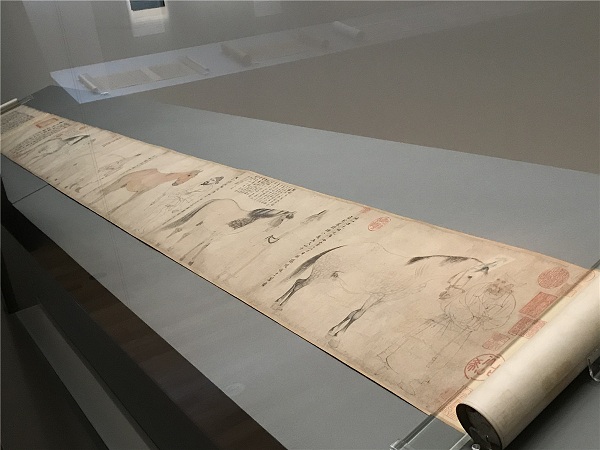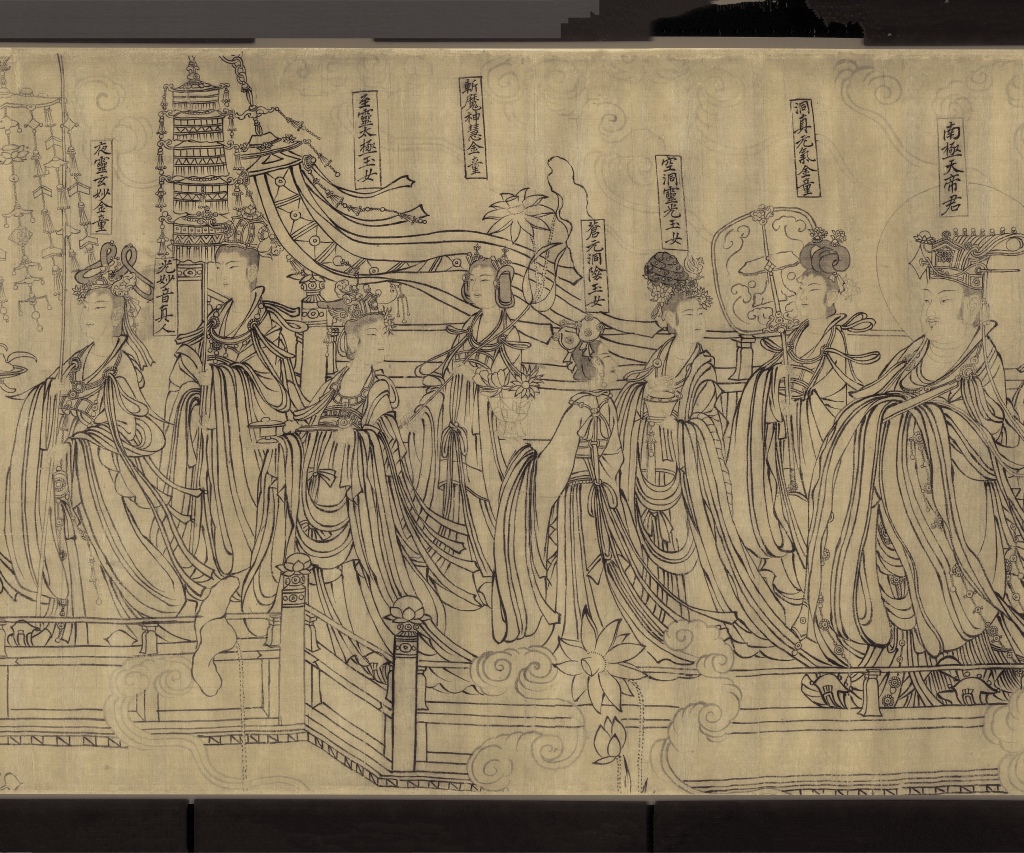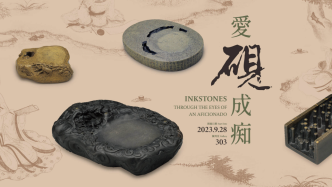
An inkstone fanatic refers to a person who is extremely obsessed with inkstones. The literati Su Shi and Mi Fu of the Song Dynasty and Gao Fenghan of the Yangzhou School of Painting in the Qing Dynasty are all famous inkstone lovers in history. What is the charm of an inkstone that makes people fall in love with it?
ThePaper.com has learned that on September 28, the "Special Exhibition of Love of Inkstones and Becoming a Madman" was launched at the National Palace Museum in Taipei. The exhibition takes the development of inkstones as the main display, interspersed with bits and pieces related to inkstones, allowing everyone to experience the uniqueness of inkstones. Its characteristics linger among the true feelings and nature of people who used inkstones in ancient and modern times. It is reported that this exhibition not only displays more than 100 inkstones from the collection, but also borrows 15 pieces from the Taipei Museum of History to enrich the style and appearance of early inkstones.
For the ancient Chinese, inkstones were indispensable in the study room. Before computer keyboards became common and fountain pens did not appear, pens, ink, paper and inkstones were indispensable for writing and drawing. Among them, inkstones are the most enduring. For about two thousand years and more than 70,000 days, inkstones appeared, changed, finalized, and changed again, just like fashion trends, showing various forms in different eras.
The birth of inkstone
What is an inkstone? Inkstone originally means "grinding", which refers to a tool for grinding ink with water into ink. Therefore, the basic function and shape of an inkstone are an inkstone hall for grinding ink and an ink pool for storing ink. The materials of inkstone are mainly stone and mud. . Speaking of which, can you imagine what an “inkstone” would look like?
Inkstone and people
An inkstone was not only often found on the desks of literati's study rooms, but also was indispensable for painters to draw pictures, for kings to listen to political discussions, or for ladies to write poems. In cold weather, warm inkstones accompany you. Even in your luggage when traveling, inkstones are an essential item to carry with you. The inkstones of the ancients can almost be compared to today’s mobile phones!
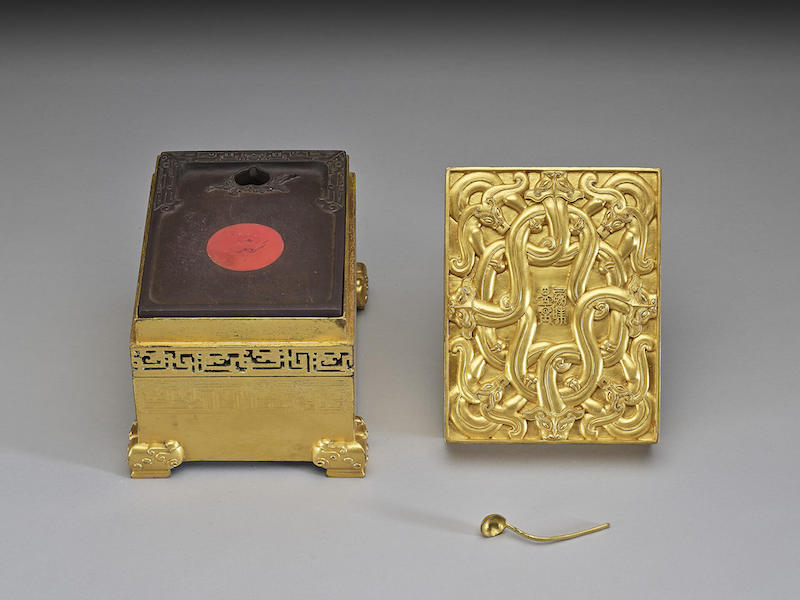
Qianlong Warm Inkstone, Qing Dynasty, with gilt copper square stove and spoon, total length 15.5 cm, width 12 cm, height 13 cm
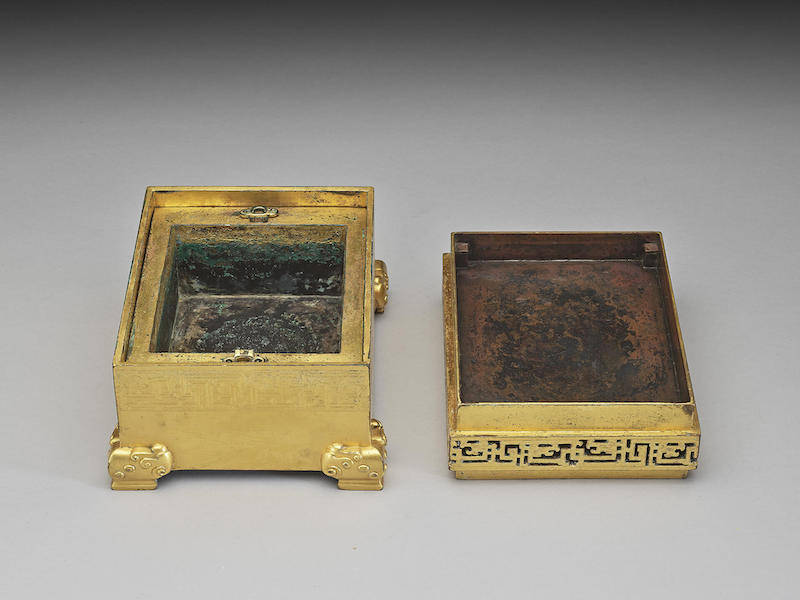
Qianlong Warm Inkstone, Qing Dynasty, with gilt copper square stove and spoon, total length 15.5 cm, width 12 cm, height 13 cm

A jade pen and inkstone box from the Qing Dynasty, 18th century. Comes with an inkstone, a pen and a water spoon. The box is 29.3 cm long, 11.1 cm wide, 11.2 cm high.

A jade pen and inkstone box from the Qing Dynasty, 18th century. Comes with an inkstone, a pen and a water spoon. The box is 29.3 cm long, 11.1 cm wide, 11.2 cm high.
The reverie of inkstone
Su Shi said that when he was twelve years old and playing digging games near his residence, he once picked up a stone suitable for use as an inkstone. From this point of view, under the basic requirement of "easy to produce ink", inkstone material has great possibilities. If it meets the conditions of beautiful stone, it will be even more ideal.

Ming to Qing Dynasty, 17th century jade plum branch pattern inkstone, length 9.0 cm, width 6.2 cm, height 1.7 cm

Ming to Qing Dynasty, 17th century jade plum branch pattern inkstone, length 9.0 cm, width 6.2 cm, height 1.7 cm
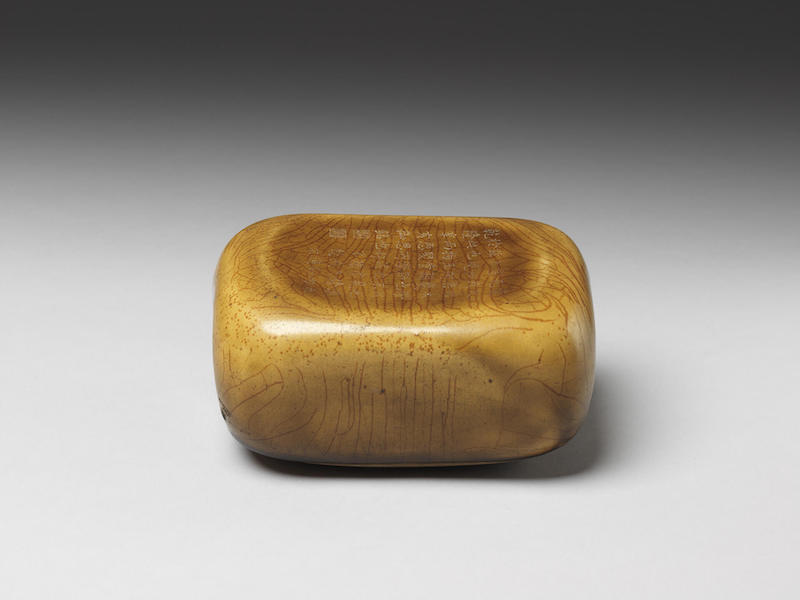
Tang yellow glaze pillow-shaped inkstone, 14.0 cm long and 9.7 cm wide

Tang yellow glaze pillow-shaped inkstone, 14.0 cm long and 9.7 cm wide
Early inkstone style
The earliest inkstones unearthed by archeology that can be called "inkstones" are slab inkstones from the Warring States Period to the Han Dynasty. They were mostly taken from natural stones, with flat and smooth surfaces and attached grinding stones. Three-legged stone inkstones with animal buttons were popular in the Eastern Han Dynasty. Round inkstones with multiple legs were often unearthed from tombs in the Sui and Tang Dynasties during the Six Dynasties, and became one of the styles of imitating ancient inkstones after the Song and Yuan Dynasties.

Han Dynasty stone carving three-legged stone inkstone to ward off evil spirits, diameter 18.5 cm, height 24 cm
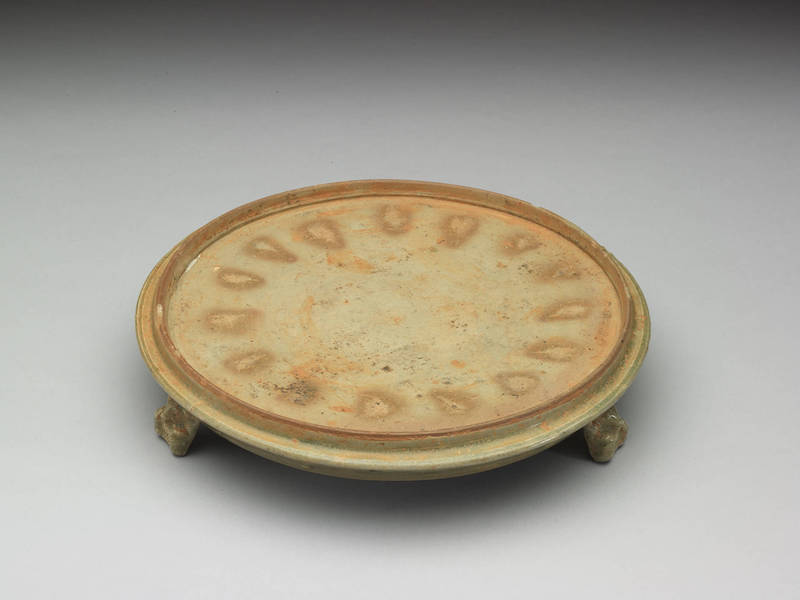
Western Jin celadon three-legged inkstone, diameter 18.6 cm, height 4.0 cm

Western Jin celadon three-legged inkstone, diameter 18.6 cm, height 4.0 cm
Completeness of inkstone style
With the maturity of the imperial examination system in the Song Dynasty, a large group of scholars formed in society. This large group of inkstone users laid the foundation for the future development of inkstones. Before 1987, elementary and middle school students in Taiwan used brushes to write compositions, and they often used rectangular inkstones to grind ink. This flat-bottomed inkstone style originated from the "chaoshou inkstone" with a hollow bottom inkstones in the Song Dynasty. Do you want to know how they evolved?
Fengzi inkstone
The bottom of the inkstone has a foot and the tail is raised, so that the ink can flow backward to the head of the inkstone. There is no obvious difference between the inkstone pool and the inkstone hall. The tail of the inkstone is wide, the head is narrow, and the surface of the inkstone looks like a trapezoid when viewed from above. Its predecessor was a dustpan-shaped inkstone.

Liao to Jin 11th to 12th century, Yancun Shifeng inkstone, 19.1 cm long, 10.9-11.6 cm wide, 1.2-2.8 cm high
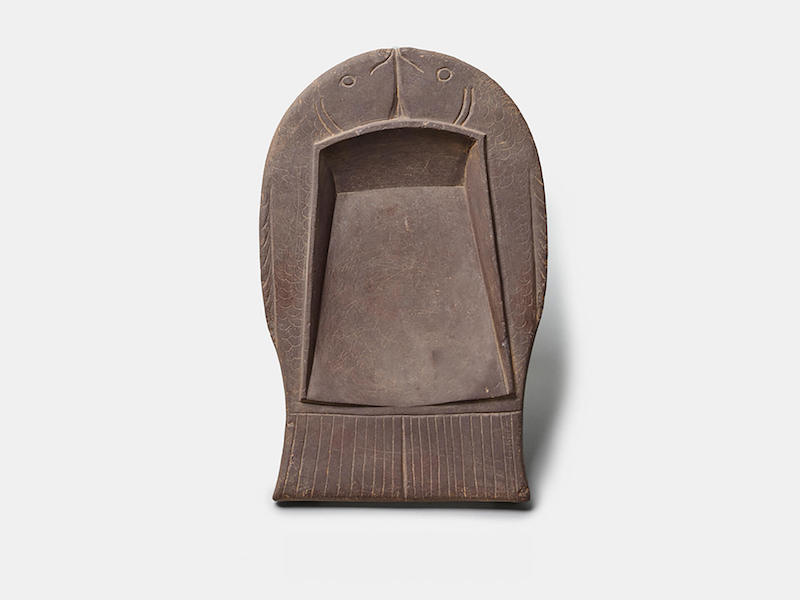
Song Shuangyu inkstone, 23.2 cm long, 14.2 cm wide, 2.5 cm high
hand inkstone
The hand-chao inkstone was the mainstream inkstone style in the Song Dynasty. The bottom of the inkstone was hollowed, the ink pool dropped steeply, the edge of the inkstone was obvious, and the shape of the inkstone was flat. Its predecessor was the Fengzi inkstone. The surface of hand-made inkstones in the Ming Dynasty was flat, and the bottom of the inkstone was often deliberately cylindrical to retain the unique stone eyes of the end stone.

A Banana Leaf White Wenlan Inkstone from the Song Dynasty, 23.1 cm long, 14.1 cm wide, 6.3 cm high

Song flame bead inkstone, 17.5 cm long, 11 cm wide, 3 cm high
Rectangular inkstone
The bottom of the inkstone has no feet or side walls. Various forms of inkstone ponds and inkstone halls on the surface of the inkstone are emphasized, such as Fengchi, Kuo Nang, Jingtian inkstone, etc., and are given various meanings. There is no distinction between the inkstone pool and the inkstone hall, showing the natural texture of the inkstone itself. It is one of the mainstream inkstone styles in the Ming and Qing Dynasties.

Song Dynasty purple stone Fengchi inkstone, inscription of the first year of Chunxi, 24.1 cm long, 16.4 cm wide, 3.5 cm high
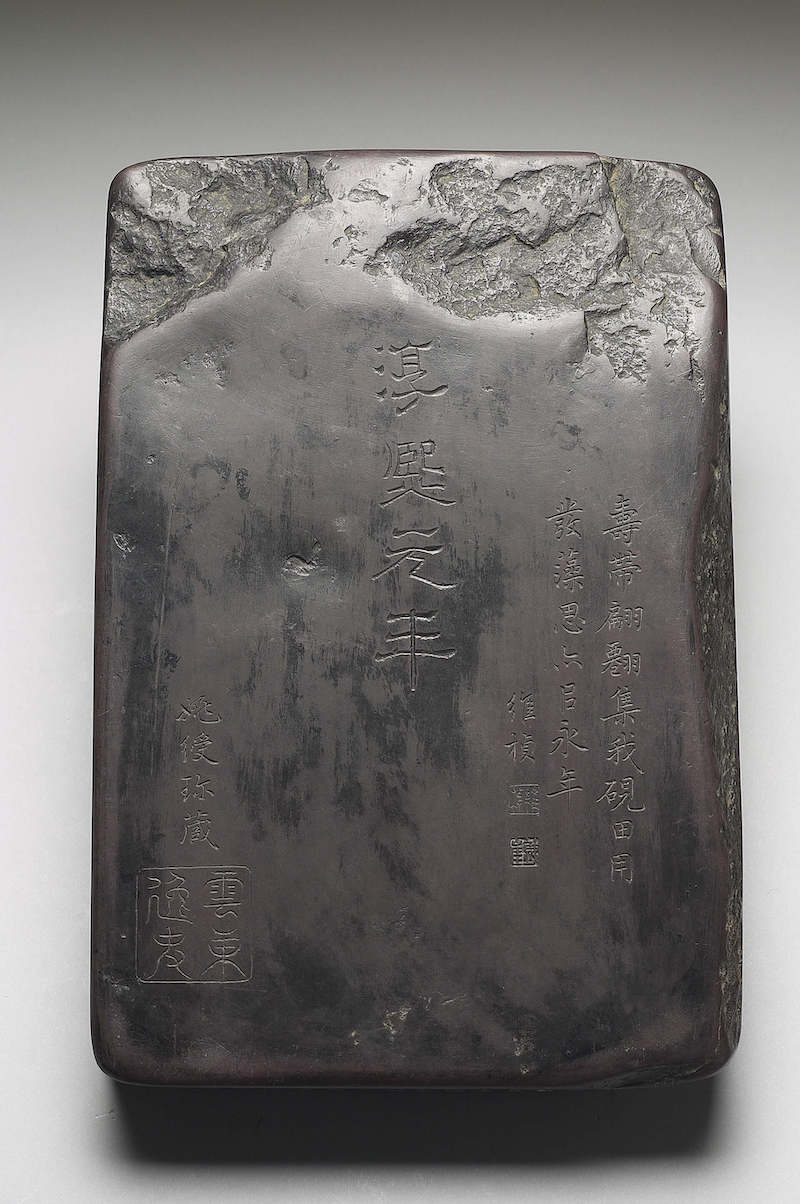
Song Dynasty purple stone Fengchi inkstone, inscription of the first year of Chunxi, 24.1 cm long, 16.4 cm wide, 3.5 cm high

Qing Yongzheng Sheshi inkstone, 15.3 cm long, 10.3 cm wide, 2.8 cm high
Inkstone is not inkstone
Breaking the limitation of the square and circle of the inkstone, or taking the natural shape of the inkstone as the orientation, or starting from the objects in nature, the inkstone style is full of creativity and has unlimited possibilities. In addition to the function of grinding ink, it emphasizes the independent personality of the inkstone itself, just like a work of art.
Shape inkstone
Often called "Zi Shi", it refers to the fine stones among large stones, mostly natural round stones, with smooth stone texture, retaining the original shape of the stone, with slight modifications, making it simple and natural.

It is said that the Duanxi natural stone inkstone of the Song Dynasty is 11.0 cm long, 9.5 cm wide and 3.2 cm high.

Qing Kangxi Songhua stone inkstone inlaid with mother-of-pearl. The inkstone is 11.0 cm long, 9.0 cm wide, 1.1 cm high. The box is 11.9 cm long, 9.9 cm wide, 2.8 cm high.
Haitian inkstone
With the theme of sea and sky, there are fairyland pavilions or clouds and dragons traveling through it. The inkstone body and the sides of the inkstone are fully decorated with reliefs. The inkstone hall and inkstone seem to be in the vast waves or clouds.
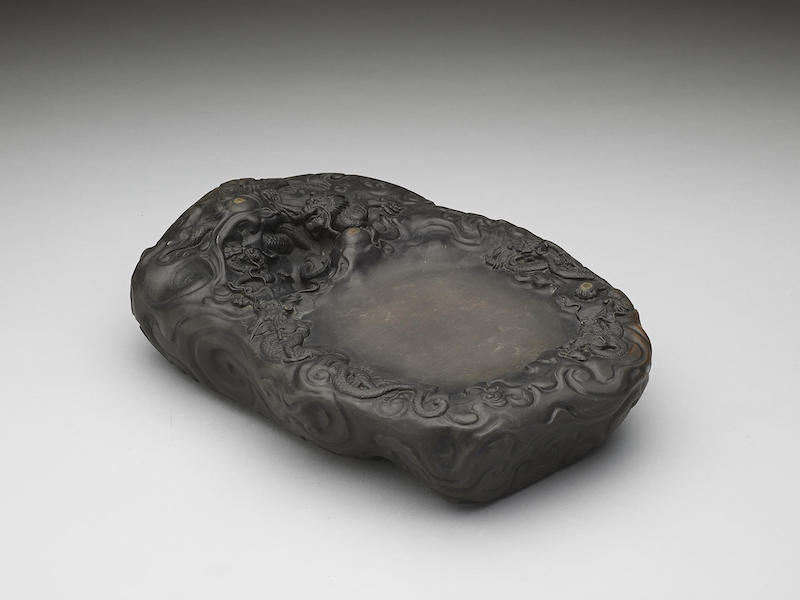
Mingduan Stone Six Dragon Inkstone, 27.4 cm long, 18.7 cm wide, 7.2 cm high
Xiao Xingyan
Using tree trunks, leaves, melons, bamboos, etc. as shapes, the surface and back of the inkstone are considered as one, making it a complete three-dimensional sculpture. The inkstone hall and other parts are also integrated into it, and the design is very ingenious.
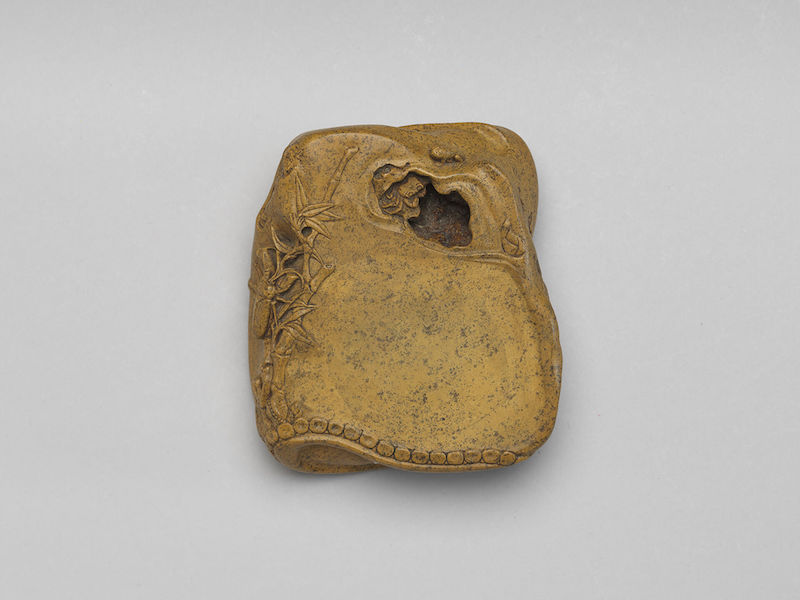
Qing Dynasty 18th to 19th century Chengni bamboo inkstone, Ji Nan collection

Ming Dynasty banana leaf pure mud inkstone, 22.7 cm long and 2.3 cm high
Be friends with inkstone
Inkstones are the tools that literati rely on to make a living. After establishing a good friendship with inkstones, literati wash inkstones and make inkstone boxes to love and take care of them. They also make impressions of inkstones, write inkstone records, and leave records. There is also love. Inkstone collectors enjoy and talk about inkstones together, forming a circle of inkstone friends.
cultural memory
Inkstones are strong, like stele stones, and can be passed down from generation to generation, forming a carrier of cultural memory. The inscriptions on the inkstone by cultural celebrities have aroused the sighs of the ancients who once took care of this month. The theme of the story of Xiu Xiu and Xi Zhi exchanging geese in the Orchid Pavilion, or the expression of Su Shi's timeless literary legend, is the connotation of the inkstone that is most loved to be recited.

Taohe Shilanting inkstone from Song Dynasty to Yuan Dynasty, 23.2 cm long, 17.8 cm wide, 3.4 cm high
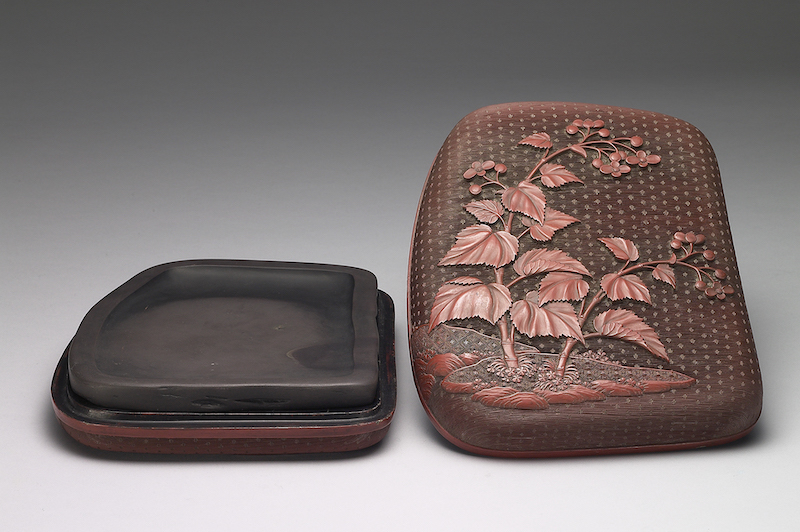
Qing Dynasty 17th to early 18th century Dongpo Li Cun Tu inkstone, Song Dynasty inscription, length 21.5 cm, width 17.7 cm, height 2.3 cm
Collection of inkstones
You can't go a day without washing the inkstone. In addition to removing dirt, cleaning the inkstone also requires nourishing and moisturizing the stone with clean water. In order to avoid drying the stone, the inkstone box for storing inkstones should not be made of metal. Most of them are lacquer boxes or wooden boxes and are custom-made. Furthermore, it doesn’t matter if you don’t have a camera to handle and view the fine inkstones. Drawings, moldings, and written descriptions will leave eternal records.

Qing Dynasty 19th century rhinoceros leather lacquer box and wooden box containing banana leaf white inkstone. Inkstone: 22.8 cm long, 13.9 cm wide, 6.0 cm high. Lacquer box: 22.8 cm long, 13.9 cm wide, 6.0 cm high.

The Imperial Inkstone Book of the Western Qing Dynasty, compiled by Yu Minzhong of the Qing Dynasty, and the manuscript of the imperial imperial palace with red silk panels during the Qianlong period of the Qing Dynasty
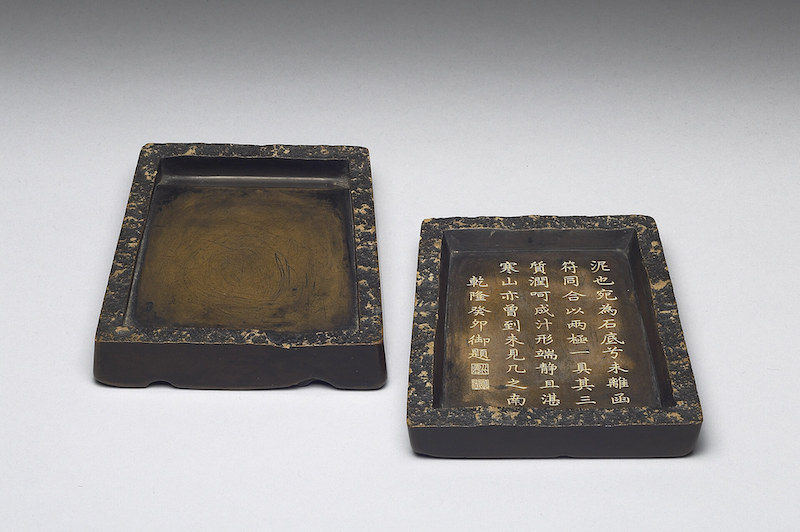
Mingcheng Mud Stone Inkstone, Zhao Yuguangming, length 12.5 cm, width 9.4-10.8 cm, height 1.7 cm, total height 2.5 cm
Inkstone friends circle
Scholars in the Ming and Qing Dynasties gathered together to discuss poetry and politics, and exchange calligraphy and painting. Those who loved inkstones tasted and collected inkstones, wrote and inscribed on them, and gave inkstones as gifts. Literati may be good at cutting inkstones, and craftsmen are also familiar with calligraphy. Inkstones are intertwined with their official careers, interpersonal relationships, and life experiences. Even though things have changed, the inkstone remains the same, remembering the past encounters with people and events.
(This article is based on information from the National Palace Museum in Taipei and related literature.)
